The world is dealing with urban flooding with an eye on the future, even as Mumbai is yet to fully implement a storm water drain project recommended in 1993. Ruthless monsoons are the new normal. And BMC alone can't save us
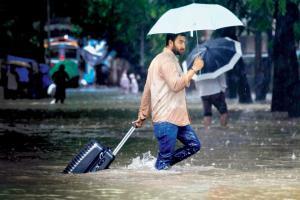
Zoru Bhatena has a complaint that every Mumbaikar will empathise with. The 43-year-old, who has been a resident of Khar for 15 years, says, "Earlier, it would flood in the area when there was heavy rainfall. Now, it drizzles and there's water everywhere." When he realised this, Bhatena did something few Mumbaikars would. One day, he set out of home and followed the path of storm water drains in Khar. These led him on a circuitous route through Bandra West, across the railway tracks to Bandra East, then to Bandra terminus from where they are supposed to drain into the Mithi River. What he found throughout were blockages obstructing the flow of water, which explained why, when the rain gets going, gutter water leaks onto Khar's roads.
So, the flowchart is simple, right? Keep the drains free of debris and sewage, and Mumbai will never see floods again? Not really. Professor Kapil Gupta from the department of civil engineering at IIT Bombay, who was part of the flood advisory committee for the BMC, formed after the July 2005 deluge, points out why: Mumbai's drainage system has not been built for the rainfall currently experienced. "When the British built the drains here, they had no rainfall data. Assuming that Mumbai received four to five times the rain that London did [which was 6 mm per hour], they built drains with a carrying capacity of 25 mm/hour.
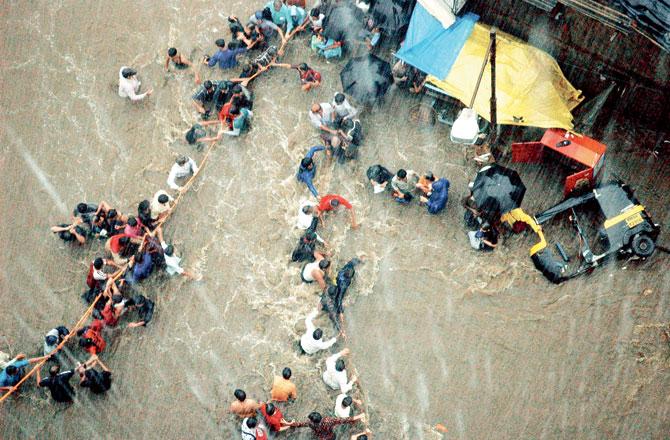
On July 26, 2005, the city received 944 mm of rainfall in 24 hours. Pic/Rane Ashish
Today, the rainfall intensity exceeds 100 mm/hour during severe weather. On July 26, 2005, it reached 196 mm/hour." He adds that BRIMSTOWAD, the storm water drain project of BMC, that was conceived in 1993 and was one of the top recommendations of the Chitale Committee report, suggested that drains with a carrying capacity of 50 mm/hour during heavy rainfall be built. We already receive more rainfall than that. He gives the example of Navi Mumbai. "When Navi Mumbai was planned, drains were designed for 168 mm/hour of rainfall, and a large number of holding ponds were also created. Which is why it is coping better than Mumbai," he adds.
Waking up to floods
What are we looking at then? On July 10, this year, Vasai-Virar, the fifth largest city in Maharashtra, was inundated with seven-feet water in some places that received 240mm of rainfall in one day. Last year, on August 29, Mumbai reeled under 315.8 mm of rain in 12 hours, one of the city's worst days since the 2005 floods when the city had received 944 mm rainfall in 24 hours. But, Mumbai is not struggling alone.

A photograph from August 29, 2017, when Mumbai was inundated having received 315.8 mm of rain in 12 hours
On December 1, 2015, Chennai received 300 mm rainfall, making it the wettest December day ever recorded in the city. The December norm for the capital of Tamil Nadu is 191 mm. By 5 am, according to a report by the Delhi-based non-profit Centre for Science and Environment (CSE), almost 80 per cent of the city was under four metres of water. Similar events have occurred not just in India — Gurugram, Bengaluru and Hyderabad, or more recently, Ahmedabad, and Delhi — but also Europe, USA, Australia, Japan and China. The phenomenon of urban floods — intense and/or prolonged rainfall, which overwhelms the capacity of the drainage system — has been slowly creeping upon us, aided in most part by climate change and increase in global temperatures.
Mumbai is most vulnerable
Subimal Ghosh, assistant professor, civil engineering department and climate studies at IIT-Bombay, recalls an experience while commuting from Ghansoli in Navi Mumbai to Powai. "There was severe rainfall on the Eastern Express Highway, while in Powai the situation was milder." Climate change, rise in global temperature and increased urbanisation are contributing to a change in rainfall patterns as we know it. Ghosh explains that the temperatures in the Arabian Sea, which lines the Mumbai coast, are increasing at an alarming rate, leading to widespread incidents of extreme rainfall in the central region of India, where Mumbai falls.
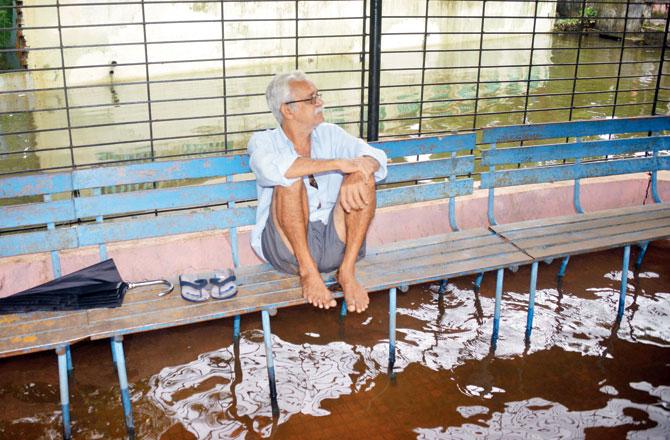
On July 10, Vasai-Virar was inundated with seven-feet water in some places having received 240mm of rainfall in one day. Pic/Hanif Patel
A study that Ghosh was part of, published in the journal Nature Communications last year, stated that widespread extreme rain — which covers a large enough area to cause largescale floods — have increased threefold over central India from 1950 to 2015. The extreme events, in which daily rainfall exceeds 150 mm, are on the rise at a rate of about 13 events per decade, the study found. And, because the urban landscape included highrises, which obstruct the path of moisture-laden winds, the intense rainfall is concentrated in certain areas.
Imagine the combination of extreme rainfall and low-lying areas. But, why imagine. Hindmata, Sion, Kurla provide fresh examples every year. Gupta says the problem starts with the origins of the city. Once seven separate islands, increased migration has led to land reclamation across Mumbai over the last two centuries in wetlands and mudflats, all of which are low-lying (see: Changing countours of Mumbai). These are the first areas to go under when the heavens open up. The reclaiming, in most parts, he says, has not been based on scientific studies of the area. The increasing density of the suburban population proved another problem. Earlier, there were natural storm water drains created by the gushing flow of water. However, says Gupta, when, residential areas came up, they built walls in drains, and, in some places, reclaimed part of the land.
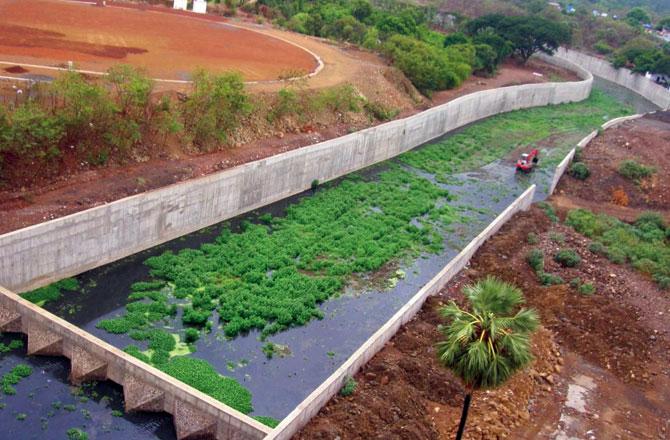
The barriers let the water out slowly so that it won’t rush and flood the low-lying areas. Pic/Sayyed Sameer Abedi
The survival tactics
Bhathena leads us to a spot near Khar-Danda on Garage Road, where the Guzder bandh stands was built in 1910 to prevent sea water coming into the suburbs. "In the 1980s, the BMC concretised the road, blocking the flow of sea water. That bandh got destroyed so badly, that it now allows sea water in during high tide," Bhatena adds. Blocking water is not a solution. In a February 2018 article for the Down To Earth magazine of CSE, Prof. Dr Dagmar Haase of the geography department of Berlin's Humboldt University, writes, "After Germany's disastrous Elbe river floods of the last two decades, dikes were relocated and modified to broaden the natural floodplain and to give the river more room. Yet, the dam burst four years ago. That is why, instead of blocking the water, other cities think of welcoming it." She, and others, cite the example of the Netherlands' Adaptive Pathway Approach, a plan that even our neighbour Bangladesh has adopted.
Marjolijn Haasnoot, an expert in water resources management and environmental modelling, at Deltares (an independent institute for applied research in the field of water and subsurface in the Netherlands), says the key is to anticipate future change instead of responding to events. (See: Going Dutch). Hasnoot adds that Netherlands has planned sand nourishment of its beaches to maintain the coastline, set new flood risk standards, and increase pump capacity near the Afsluitdijk — the barrier between the Wadden Sea and lake Ijssel. This is all in a bid to meet the challenges it will face by 2050.
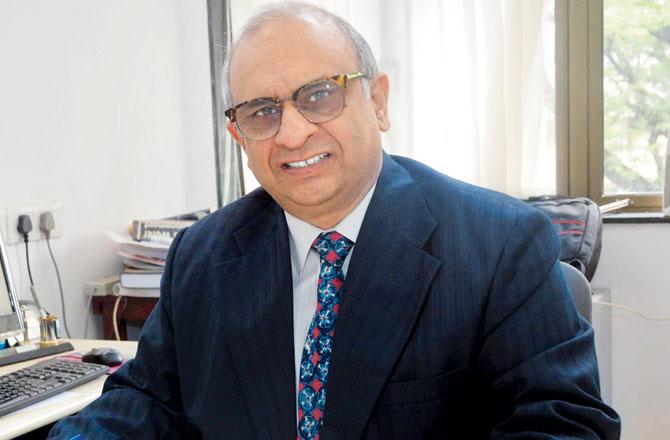
Professor Kapil Gupta, IIT Bombay, says post 26/7 they designed a holding pond on the Mithi River at Bamandayapada. This holds 30,000 litres
If the Netherlands is looking at 2050, London is projecting 100 years into the future. The Environment Agency of the UK developed the Thames Estuary 2100 Plan (TE2100) to recommend how to manage tidal flood risk at the end of the century and beyond. The plan foresees how 1.3 million people and £275 billion worth of property will continue to be protected from tidal flood risk.
Mumbai urgently needs an equally far sighted plan. Some of the Chitale committee suggestions were creation of additional gated outfalls, pumping stations, holding ponds and creation of Singapore Marina Barrage for Mumbai. It was also suggested that the administration fix gates for Mumbai lakes, Vihar and Powai, the place from where the Mithi river originates. "Many of these still haven't been implemented. Why accept the recommendations when there is no time-bound implementation," says activist James John of AGNI.

Zoru Bhatena says creation of a concrete structure at Guzder pumping station, at Khar Danda, has prevented water from reaching the sea. Over the years, as the wetlands, where mangroves once thrived, dried up, debris was dumped there. Pic/Ashish Raje
Looking beyond problems
On August 29, last year, as the city's roads got waterlogged, at several spots, manholes were opened in the hope water would drain out. That Tuesday gastroenterologist at Bombay Hospital, Dr Deepak Amarapurkar left work by car to reach his Prabhadevi home. At Elphinstone, he decided to wade through the waters, instead of sitting it out in the vehicle. Witnesses say, he fell into an open manhole on the flooded road. Two days later, his body was found in a drain near the Worli seashore.
The BMC, which received severe flak for the tragedy, this year, worked towards ensuring that the spot doesn't get flooded. G-South Assistant Municipal Commissioner, Devendra Jain, who was appointed to the post in January, says in addition to other measures, the capacity of the drainpipes was increased to 50 per cent by converting it into a boxed drain instead of arches. There are the basic steps that can and should be taken.
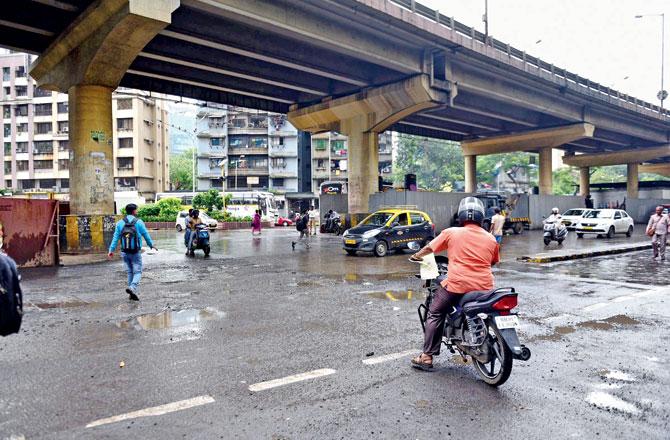
Waterlogging on Fitwala Road, Elphinstone, has now been fixed thanks to a few structural changes in the drains below, which has led to increase in capacity of the flow
Gupta says, global models are working better at combating urban flooding. "In Mumbai, you find that areas that never used to flood have started flooding. This is because drains are not being taken care of. If the authorities and citizens maintain the drains regularly and well, 50 per cent of the flooding problems would disappear."
The city needs its wetlands, depressions where water can stay. These can be natural ponds. "Look at Thane. The city used to have 101 lakes at one point of time. Now, barely 21 survive. Most of them have been filled and structures constructed on them. And now, we are also witnessing construction of houses on saltpan lands, like in Nalasopara. If water can't flow and drain, it is sure to enter homes and damage property. Thane flooded severely last year," he adds. If you think the blame lies only at the gates of the authorities that man Mumbai's drains (BMC, MMRDA, Railways), look in the mirror. "People have created parking lots on top of drains," Gupta says.
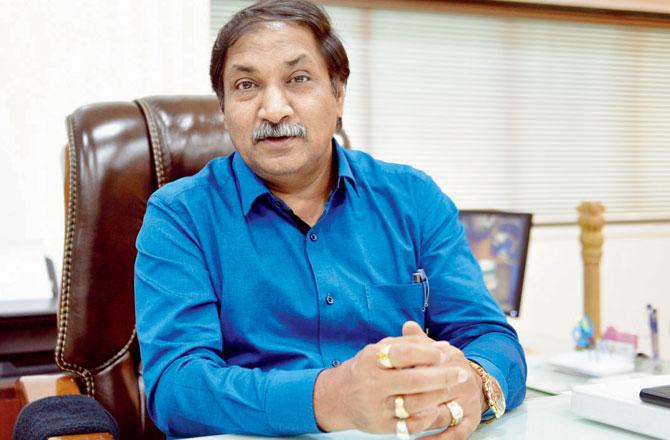
The action was taken by the new G-South Assistant Municipal Commissioner Devendra Jain, who took office in January. Pics//Bipin Kokate
And here is something you, the individual can do. Gupta suggests that housing societies and buildings start storing rain water. Recharging the ground water might not be a good solution in Mumbai, as the water is already saturated because of the sea. "Instead, every building should collect rainwater in Sintex tanks. Even if one building stores 1,000 litres, that's every 10 buildings saving 10,000 litres. That's 10,000 litres of water not running off onto the roads." Bhatena has a few more suggestions for citizen participation in preventing flooding. We can start with adhering to building laws.
"The rule is that every building should leave 25 per cent of its plot area as an open space, that's open to the sky, where they can create a garden. Also, there should be one tree for every sq metre. So, a building that stands on a 10,000 sq ft plot, should have 300 trees. But, nobody follows this." That buildings today are creating basements for multi-level parking also means that water can't seep in. "Water has to go somewhere, doesn't it?" And it has. Into our homes.
July 26, 2005
196 mm per hour of rain
August 29, 2017
315.8 mm in 12 hours
July 10, 2018
240mm in a day (Vasai-Virar)
25mm/hr
Rain carrying capacity of British-built drains
100mm/hr
City's current rainfall intensity during severe weather
What's going against us
> Rise in global temperatures raising level of Arabian sea
> This is a city built by reclaiming naturally low-lying areas
> Lack of vision and civic apathy
What's urban flooding?
Intense and/or prolonged rainfall, which overwhelms the capacity of the drainage system
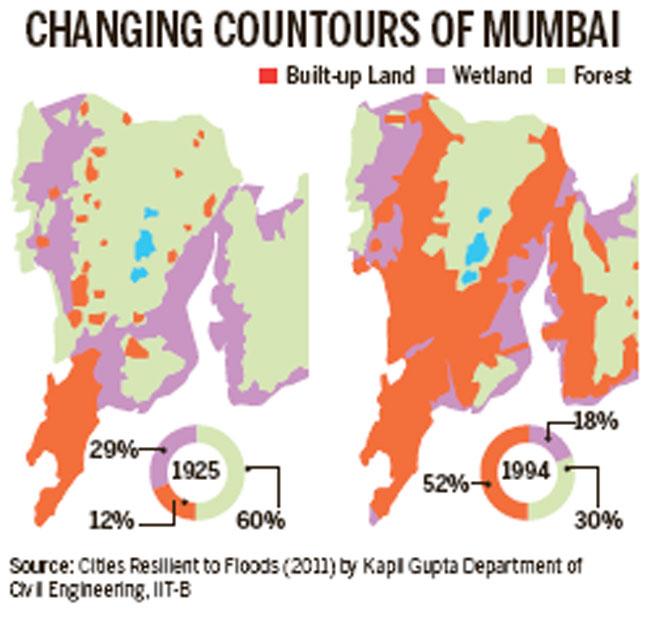
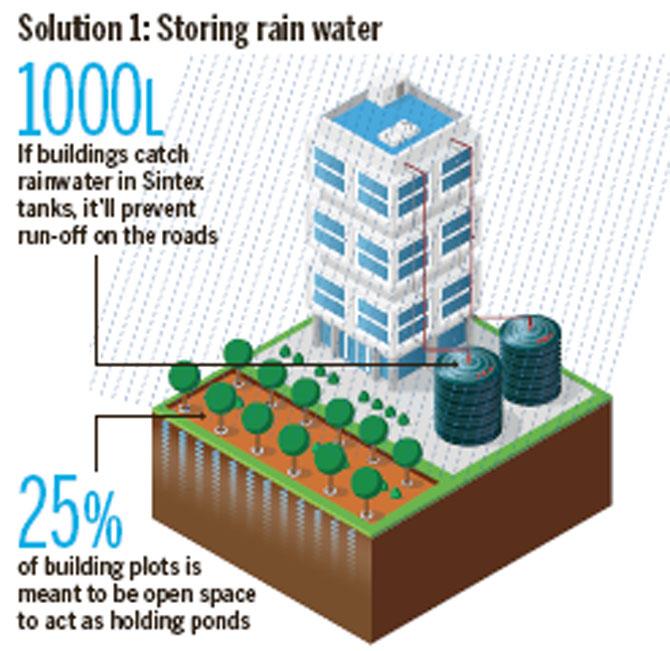
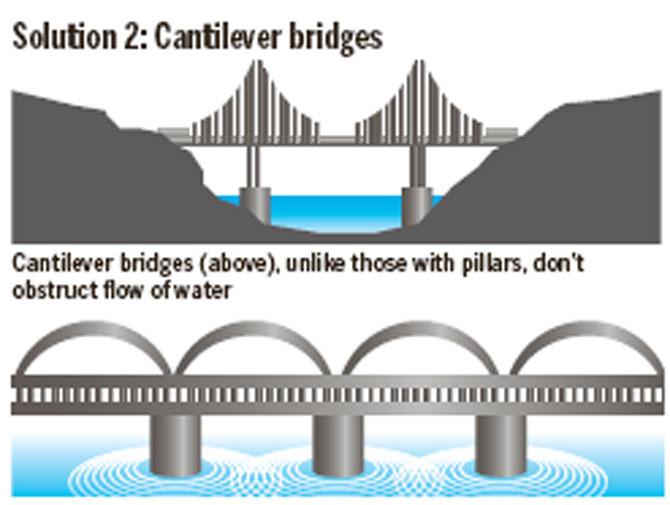
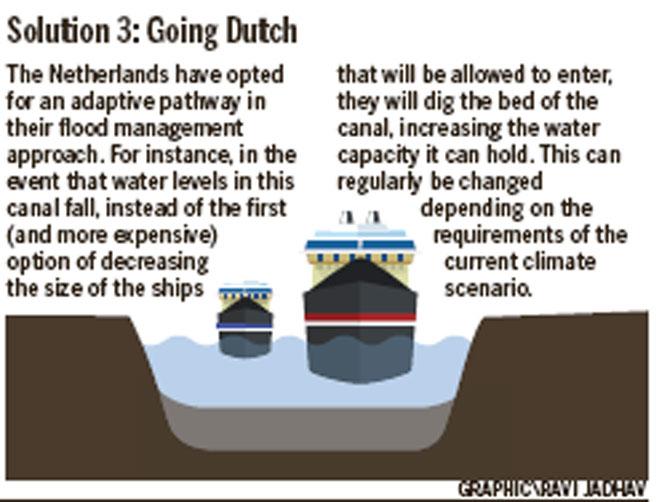
Also Read: Mumbai Rains: When it rains it 'pours' inside Thane railway station building
Catch up on all the latest Crime, National, International and Hatke news here. Also download the new mid-day Android and iOS apps to get latest updates
 Subscribe today by clicking the link and stay updated with the latest news!" Click here!
Subscribe today by clicking the link and stay updated with the latest news!" Click here!









